AI Burnout Isn’t About Tech It’s About Pace
By Sarisha Naidoo
Read time: ~4 minutes
AI promised to make work easier. Instead, for many, it has multiplied the noise. Leaders and teams find themselves caught in a double storm: hybrid work pressures and AI adoption racing faster than human rhythm.
The fatigue is real, but it isn’t the technology itself. It’s the speed, the endless flow, the absence of pause. AI can feel like caffeine for organisations: powerful in bursts, but exhausting without rest.

Hybrid Overload Meets AI Acceleration
In 2025, workplaces are juggling hybrid schedules, constant digital meetings, and rapid AI rollouts. The result is often exhaustion, not efficiency.
Nearly 60% of workers say AI and automation tools increase their workload stress (PwC, 2024). Similarly, Microsoft found that 54% of employees feel overworked and 39% feel exhausted by digital demands (Microsoft WorkLab).
The issue isn’t whether AI can do more. It’s whether leaders give people space to breathe, reflect, and adapt alongside the machines.
1. AI Pacing vs Human Rhythm
Humans don’t run at machine speed. Our creativity, empathy, and decision-making thrive on cycles of focus and rest. Yet AI tools are designed for constant availability.
One executive shared how she deliberately paused an automation bot that was pinging updates every 10 minutes. “I realised the tool was serving speed, not sanity,” she explained. “Switching it off gave me clarity I hadn’t felt in months.”
Another frontline employee described how constant task prompts from an AI workflow tool felt like “being managed by a robot boss.” Only after her manager introduced quiet hours did she feel her energy return.
The promise of AI is to ease repetitive tasks scheduling, data entry, initial drafts. McKinsey estimates that 60% of jobs have at least 30% of tasks that could be automated (McKinsey Future of Work). But without pacing, the same tools become new stressors.
2. Boundaries in Automation
Automation can liberate people from monotony. But without boundaries, it risks chaining them to constant alerts. Leaders can set parameters that protect attention and wellbeing.
Practical boundaries include
- Batching updates — limiting AI notifications to scheduled intervals.
- Smart integrations — ensuring systems “talk” to each other so staff aren’t drowning in duplicate alerts.
- Strategic pauses — deliberately switching off bots during focus periods.
- Testing first, scaling later — piloting new AI tools with small teams before rolling them out widely.
- SOPs for automation — embedding clear guidelines for when to automate, when to integrate, and when to return tasks to human hands.
As Sarisha Naidoo puts it:
“Wellbeing asks us to quiet machines and restore space.”
3. Culture of Restoration, Not Just Productivity
If organisations measure AI purely on productivity, they miss the deeper cost: burnout, disengagement, and talent loss. The smarter approach is to view AI as a partner in restoration.
That means:
- Freeing people from repetitive, low-value tasks so they can focus on creativity, problem-solving, and care.
- Treating wellbeing as strategic infrastructure, not an afterthought.
- Designing workflows with rest built in.
The World Health Organization notes that every $1 invested in employee wellbeing generates a $4 return in improved health and productivity (WHO). Rest isn’t lost time it’s resilience.
Visual recommendation: A chart showing 90 minutes of focus → 15 minutes of recovery or a dashboard interface that prompts mindful breaks. Small nudges can help reset culture toward restoration, not just output.
AI should expand human capacity, not erode it. Leaders who manage pace, set boundaries, and embed wellbeing into their systems will not only protect their people they’ll unlock creativity, adaptability, and trust.
The future of work isn’t just automation. It’s integration where technology handles repetition and humans reclaim meaning.
Book a strategy a free AI strategy session to align AI adoption with human rhythm
Share this with your leadership team start the conversation today





